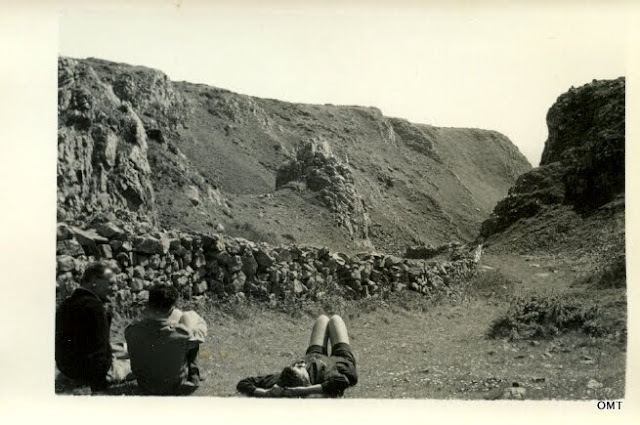Fourteen photographs of the English Landscape
“The ordinary can be absolutely miraculous.”
Simon
Armitage
The
fourteen photos here, each measuring twelve by eight centimetres, were found at
Spitalfields Market. Some of them look like they are of the moorlands in
Derbyshire at the edge of the Pennines. Others look like they come from the
east coast of Yorkshire, near Scarborough or Whitby.
They lay
among small stacks of old hardbacks and ephemera spread across the table. The
dealer couldn’t say much about them except he had had them for some time,
they’d be cheaper the more I bought and they had come with ‘a lot of stuff to
do with the Festival of Britain’.
That made
sense. The photos looked to be from around that time – 1951 – and they look to
be the work of a professional; someone sent out to take a set of photos for a
magazine article on the splendours of the north. Certainly we can see why
someone thought there was a landscape worth promoting.
The
Pennines and the Derbyshire moors, which is where we are now decided we are,
can invoke many associations, from Pride
and Prejudice to Myra Hindley and everything in between, but these days
Simon Armitage, in particular his translation or interpretation of Gawain and the Green Knight and Pearl. Although the identity original
author is unknown, scholars agree that he wrote both poems in the late 14th
century and linguistic clues indicate he came from this area.
A brief
synopsis of the first: One New Year’s Day the Green Knight turns up at King
Arthur’s court and asks to have his head cut off. Sir Gawain obliges but must
fulfil a promise to meet the beheaded one at the Green Chapel in a year’s time.
Gawain sets out and somewhere in the damp landscape he finds a castle. The
master welcomes him then heads off the next morning on a hunt while Gawain
keeps his beautiful wife company, and you just have to read it yourself. The
landscape, as Armitage describes it anyway, is more rugged than these images of
moorland suggest, more like parts of Staffordshire to the west.
Pearl however takes place on open land, where a
man grieving for his young daughter Pearl, follows a river and meets a woman
walking on the other side. They talk across the water and she reveals she is
his daughter, now grown up and a Queen of Christ. They debate various issues
this raises until, desperate to reach out to her, the man jumps into the river
and tries to cross it.
Not that
either Gawain or Pearl are dependent upon the landscape to tell their story although
in Gawain there is the sense that up
here it is wild and rugged, especially compared to the more gentle lands in the
south where Arthur has his court. Also, in both there is an idea that the
landscape is mutable, which is important in moorland where the weather can
shift by the hour.
Speaking
of Norfolk, this looks so much like the coast around Cromer and Happisburgh that
we could put all doubt aside. That exposed reef can be thought of as the edge
of Doggerland, the now submerged plain that once linked Britain to Europe and
was home to mammoths, lions, rhinos and Neanderthals. Our photographer wouldn’t
have known that, or that the oldest relic of any human in Europe would be found
near here. But then, in 1951 a lot of people thought anything from the time
before the war was old.
Even if I
had bought these in another country, we’d still know it was England. The
patchwork fields and hedgerows tell us it can’t be anywhere else. This was no
doubt our photographer’s intention: to get an impression of the land that
wasn’t just idealized but emblematic and one that visitors as well as citizens
would recognize.













